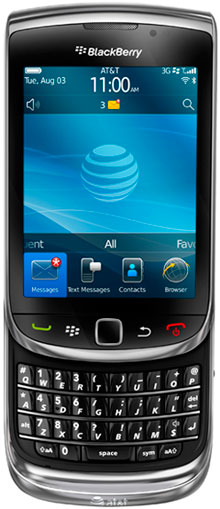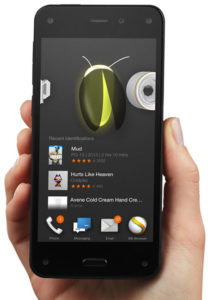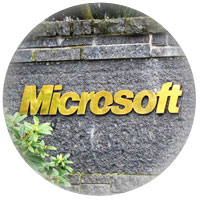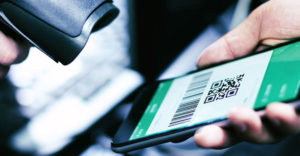
The BlackBerry Torch 9800 has been widely viewed as Research In Motion’s best shot at regaining even footing in its battle with rivals Apple and Google in the smartphone arena, but after just a few days on the market, the device’s price has already been slashed.

Some 150,000 of the handsets were sold over the weekend, according to a report in The Wall Street Journal — a far cry from the 1.7 million iPhone 4 units Apple said it sold in its first three days.
AT&T is selling the device for US$199.99 with a two-year contract.
However, news surfaced Monday that Amazon had slashed its sale price to just $99.99. [*Editor’s Note — Aug. 18, 2010]
That has the market worried.
‘The Same Old Tired Device’
“BlackBerry Torch Fizzles,” read one headline on Tuesday, for example.
“Has the BlackBerry Torch flamed out already?” asked another.
Indeed, “this was supposed to be the device that allowed RIM to punch their way back onto the relevance map, but instead it looks like it is turning into a better version of the same old tired device,” telecom and wireless analyst Jeff Kagan told the E-Commerce Times.
‘Not Enough Yet’
“RIM has challenges,” Kagan asserted. “They are the king of the smartphone hill, but that hill is getting shorter every quarter. Apple with the iPhone and Google with the Android are the real growth engines of the smartphone market today.”
RIM “does recognize that there are real threats which could change the leadership in the industry, and they are trying, but they just cannot seem to move the innovative mark,” Kagan explained.
When RIM launched its first touchscreen in the BlackBerry Storm back in 2008, “we thought this could be the device that leads them to greatness again,” Kagan said. “Not so.”
Same goes for the Torch — “so far, at least,” he added. “Early reports say this new operating system and device may not be enough yet.”
‘Long-Term Use Matters Most’
On the other hand, “no matter how long the lines are the day a device goes on sale, the fact of the matter is that these long lines and demand are driven by hype — not whether people actually like the device,” Allen Nogee, principal analyst for wireless technology and infrastructure with In-Stat, told the E-Commerce Times. “No matter how much you play with a phone in the phone store, it’s the long-term use that matters most.”
RIM’s last “flashy notable launch was the Storm,” Nogee pointed out. “While I remember long lines and strong demand for that device initially, over time many bugs came to the surface — and many people were not very happy.”
It’s possible, then, that “many people that saw the problem with the Storm are now learning from the experience and being much more hesitant to jump on a RIM device very early on,” Nogee suggested. “The Storm release may have tarnished RIM’s image, and many are taking a wait-and-see attitude.”
‘BlackBerry Users Tend to Be More Conservative’
The BlackBerry Torch is also not the first or only phone that has been steeply discounted soon after its arrival, as one Fortune blog noted on Tuesday. In fact, the Sony Ericsson Xperia X10 just had its price slashed only one day after its release, the blogger pointed out.
There’s the matter of user demographics, Nogee added.
“BlackBerry users tend to be more conservative and use a BlackBerry because it provides the best solution for them,” he explained. “Typically these aren’t the same people that need the latest cutting-edge device.”
iPhone users and early Android adopters, by contrast, “tend to be younger folks that love technology,” he added.
$171 in Components
Still, “RIM’s future depends on it keeping its existing customer base while attracting other users, so the reaction to new devices like the Torch is very important to the company,” Nogee concluded.
There’s also no denying that a $100 price tag doesn’t cover the cost of making the smartphone. Taken together, in fact, the Torch’s components cost $171 per phone, plus $12 for manufacturing, according to a Wall Street Journal report citing estimates from iSuppli.
So what should RIM do next?
‘RIM Has to Change’
“First you have to fix the problem — then you can start to rebuild,” Kagan said. “RIM has to create a device and operating system that customers love. Then they can start to rebuild in the U.S. marketplace.”
RIM will also have to “put together an amazing public relations program to build themselves back up again,” he added. “They just missed on all three key areas so far.
“Is RIM in trouble going forward? Not yet, but they could be,” Kagan concluded. “They are not heading in the right direction yet. Customers are used to the amazing marketing from Apple and Google — the usually more quiet RIM has to change, or they will lose.”
*ECT News Network editor’s note – Aug. 18, 2010: The reports that Amazon had cut the price of the Torch were “inaccurate and misleading,” according to RIM spokesperson Marisa Conway. “Amazon actually launched the BlackBerry Torch from the very beginning at $99 and that is obviously a common online pricing and promotional strategy that has been used with many other product introductions in the past,” she told the E-Commerce Times.






















































Social Media
See all Social Media